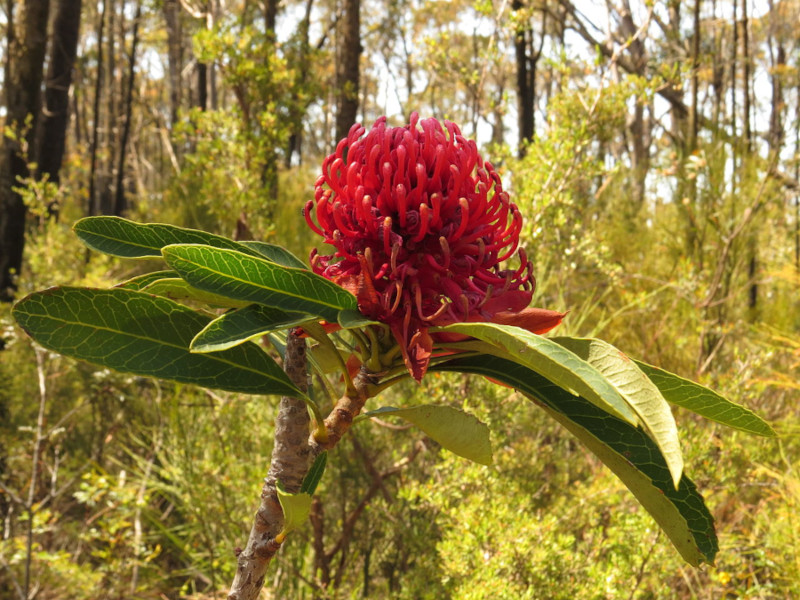
New South Wales Waratah Facts
- This beautiful and distinctive product of botanical evolution most frequently goes by the informative common name of New South Wales Waratah. It does have one other general title, though. That’s true since it also holds the much shorter term waratah.
- Both, however, are much simpler than the one by which it’s perhaps better known within the scientific community. That moniker, unfortunately, is quite difficult for the layperson to pronounce. It bears the techincal appellation of Telopea speciosissima.
- The English botanist, James Edward Smith, first described the species in 1793. He, however, assigned it the tag Embothrium speciosissimum. Later, though, Scottish botanist, Robert brown, assigned the botanical marvel the official epithet it holds today.
- Previously, a certain amount of confusion existed among researchers regarding this creation of Nature. This occurred due to disagreement over the possibility of the existence of subspecies. Currently, however, none are recognized by science.
- Thankfully, the awesome New South Wales Waratah appears to be maintaining a thriving population base. That pleasant state further seems to hold true across the entirety of its native range. The IUCN therefore presently lists it as Least Concern.
- The wonder nevertheless still faces numerous potential threats to its continued existence as a species. Like all other forms of life on earth today, though, most of these stem from the actions of mankind. Perhaps its chief threat comes from climate change.
Related Articles
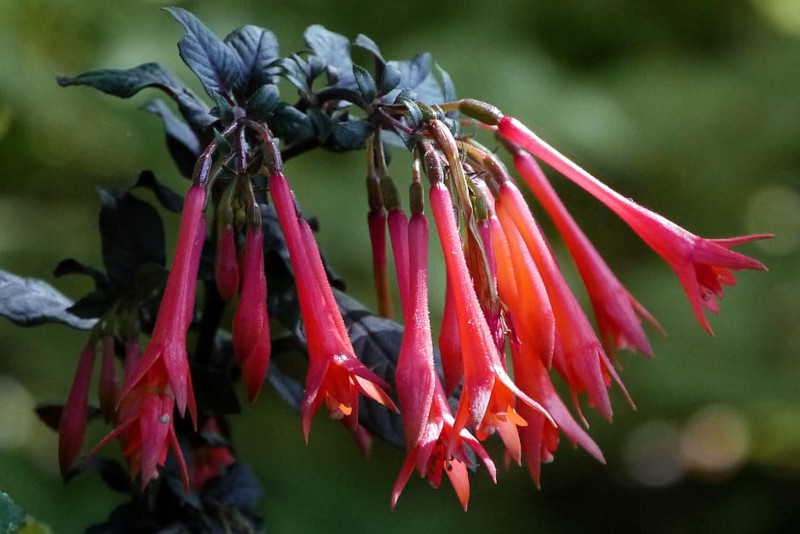
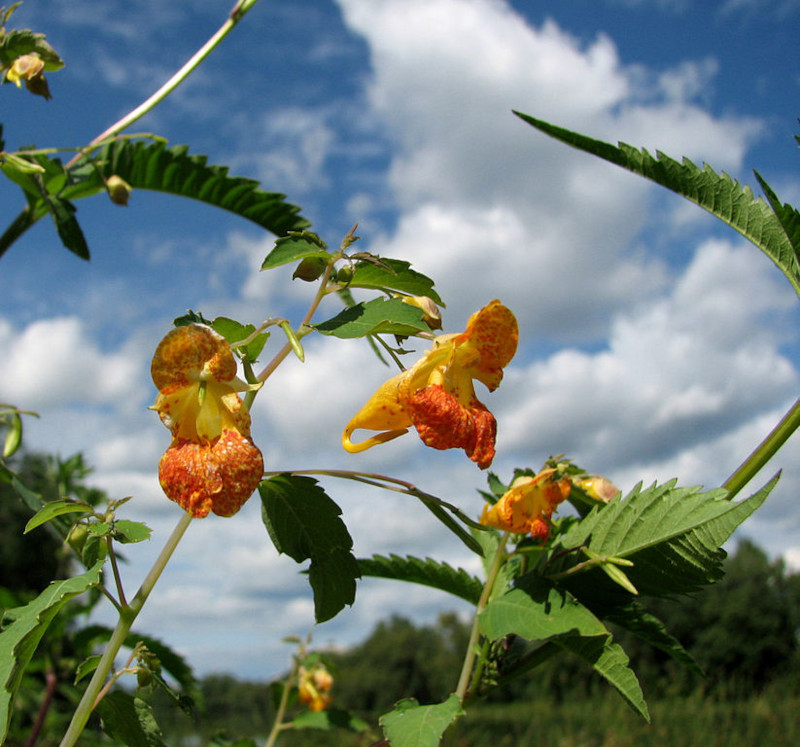
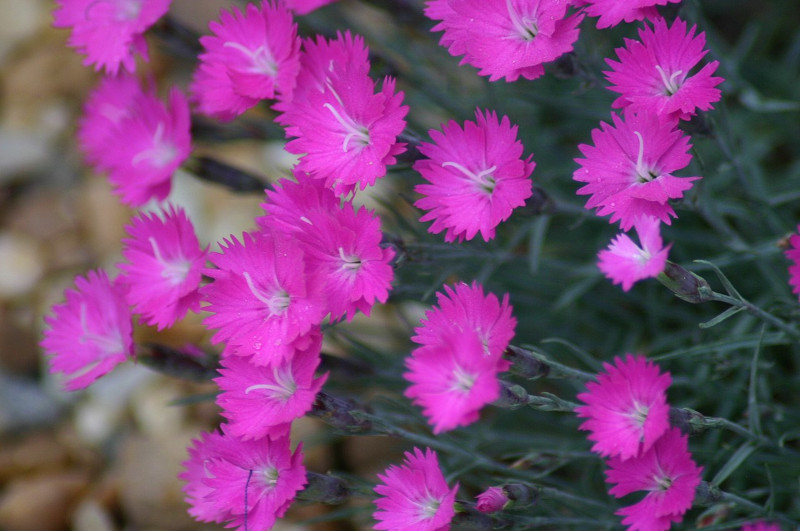
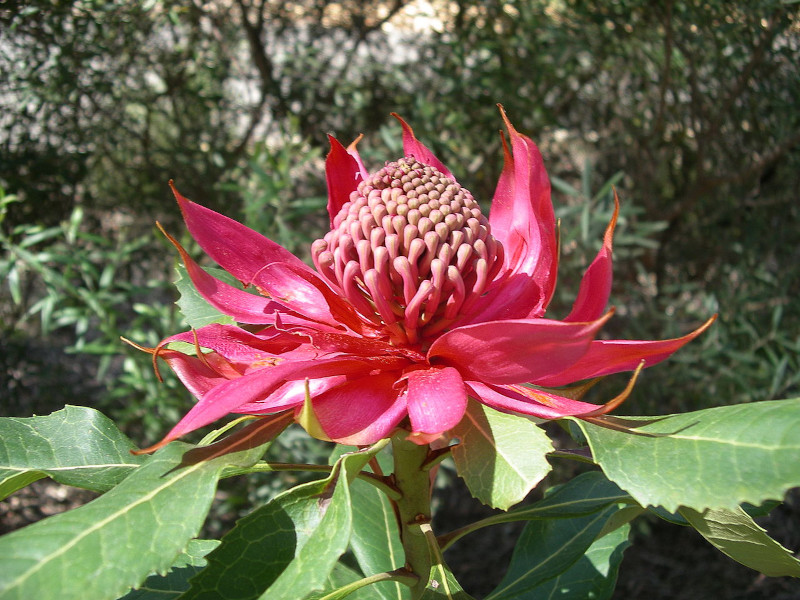
New South Wales Waratah Physical Description
The aptly-named New South Wales Waratah almost immediately captures the attention of individuals who encounter it. Unlike some flora around the world, however, it does so for more than one reason. That’s true since it’s both lovely and of a very respectable size.
The plant develops as a shrub, but one that reaches large dimensions. Most examples attain heights ranging from approximately 9.8 – 13.1 ft (3 – 4 m). Exceptional specimens do naturally occur, of course, yet even they rarely exceed these dimensions by much.
Each plant of this visually impressive species typically produces at least one, but often several stems. These features grow upward from a sizeable woody base, and rise either nearly or completely vertically. Most plants also produce no branches extending from this.
Every stem does, however, manifest multiple leaves. This foliage typically appears in an alternating pattern at varying locations along the length of the shaft. These average 5 – 10 in (12.7 – 25.4 cm) in length. They’re also dark green in color, with toothed edges.
Yet, it’s the fantastic flowers of the New South Wales Waratah that garner the most attention. These develop inside of a protective shell of leafy bracts. Each flowerhead consists of as many as 250 individual, elongated structures that create a slightly domed shape.
Collectively, this structure measures an average of 3 – 4 in (7.6 – 10.2 cm) in diameter. But, it’s the color of this breathtaking blooms that catches the eye. In color, this generally displays as a deep, crimson red. That color pattern extends to the surrounding bracts, too.
- Kingdom: Plantae
- Phylum: Tracheophyta
- Class: Magnoliopsida
- Order: Proteales
- Family: Proteaceae
- Genus: Telopea
- Species: T. speciosissima
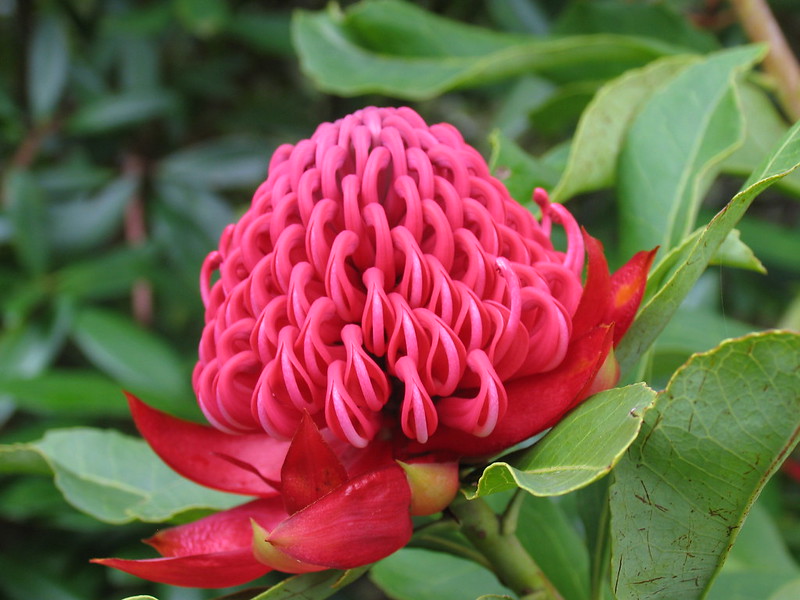
New South Wales Waratah Distribution, Habitat, and Ecology
The otherworldly beauty of the New South Wales Waratah evolved as native to a very limited portion of the surface of the earth. The precise of location of that zone of habitation remains pretty clear, though. As the name implies, it lives naturally in New South Wales.
This state of Australia places the plant’s native range on the east coast of the continent. Yet, even within this greater are it only inhabits certain sections. It mainly lives in the central coast region. Other groupings, though, live in such places as the Watagan Mountains.
The intriguing flora additionally displays decidedly strong preferences regarding its choice of habitat. Sadly, however, these only serve to further limit is possibility of expansion. In all places it lives, though, the plant generally represents part of the local understory.
It most frequently develops in regions comprised of open forest. Yet, these same surroundings must still meet precise criteria. The soil must possess a high concentration of sand, and the surrounding region must receive a moderately high level of annual rainfall.
The New South Wales Waratah also possesses yet another distinctive evolutionary characteristic. That’s due to the fact that insects have very little to do with its pollination. Instead, it typically achieves this via the visitation of various birds, and even a few mammals.
The marvel of Nature usually blloms for around 6 weeks, during September to October. It’s also actually developed to flourish best following a wildfire. Its underground woody base survives the fire, and later takes advantage of the removal of competing plants to thrive.
Species Sharing Its Range
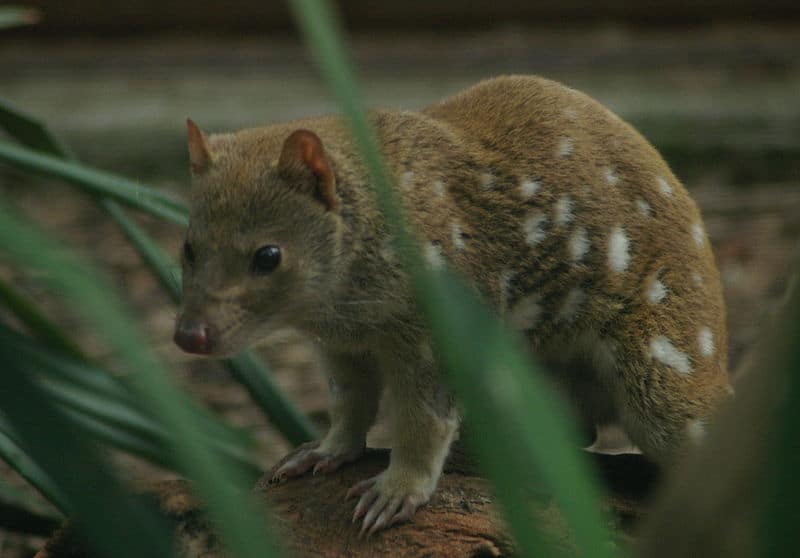
Tiger Quoll
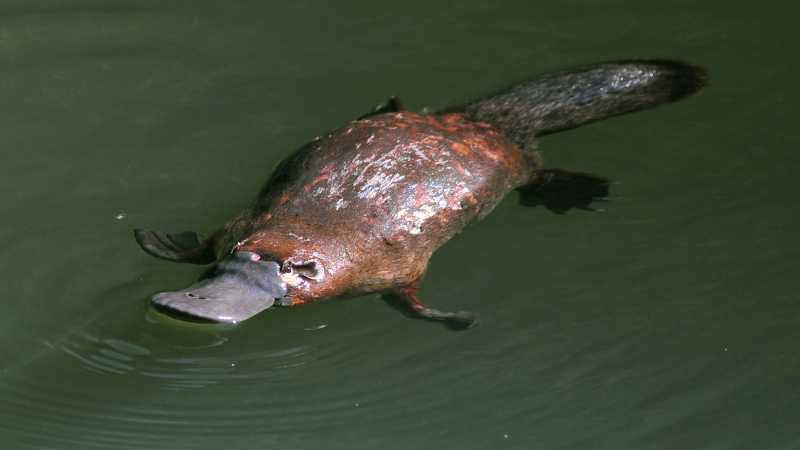
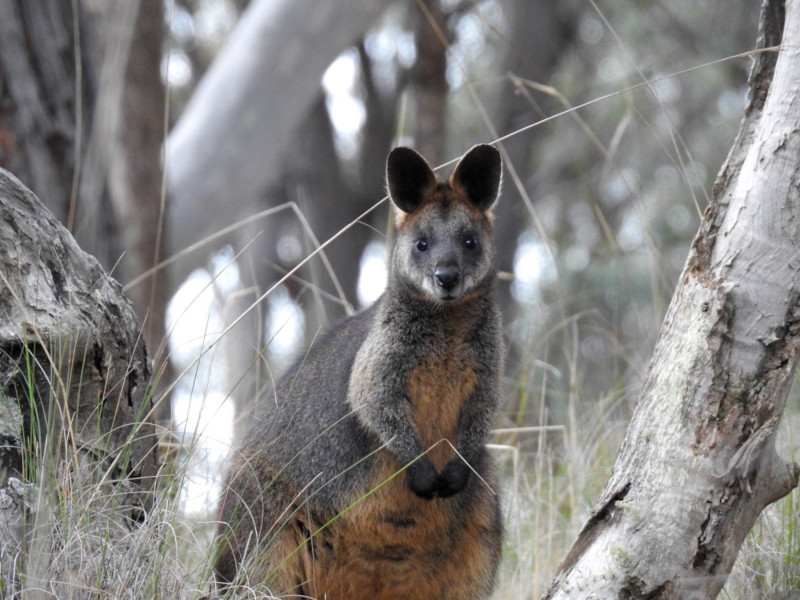
Check out our other articles on 3 Enchanting Marvels of Ethiopia, Moose, Mississippi River, Southern Darwin’s Frog, Oceanic whitetip shark, Mountain Apollo, Jamaican Iguana









Leave a Reply